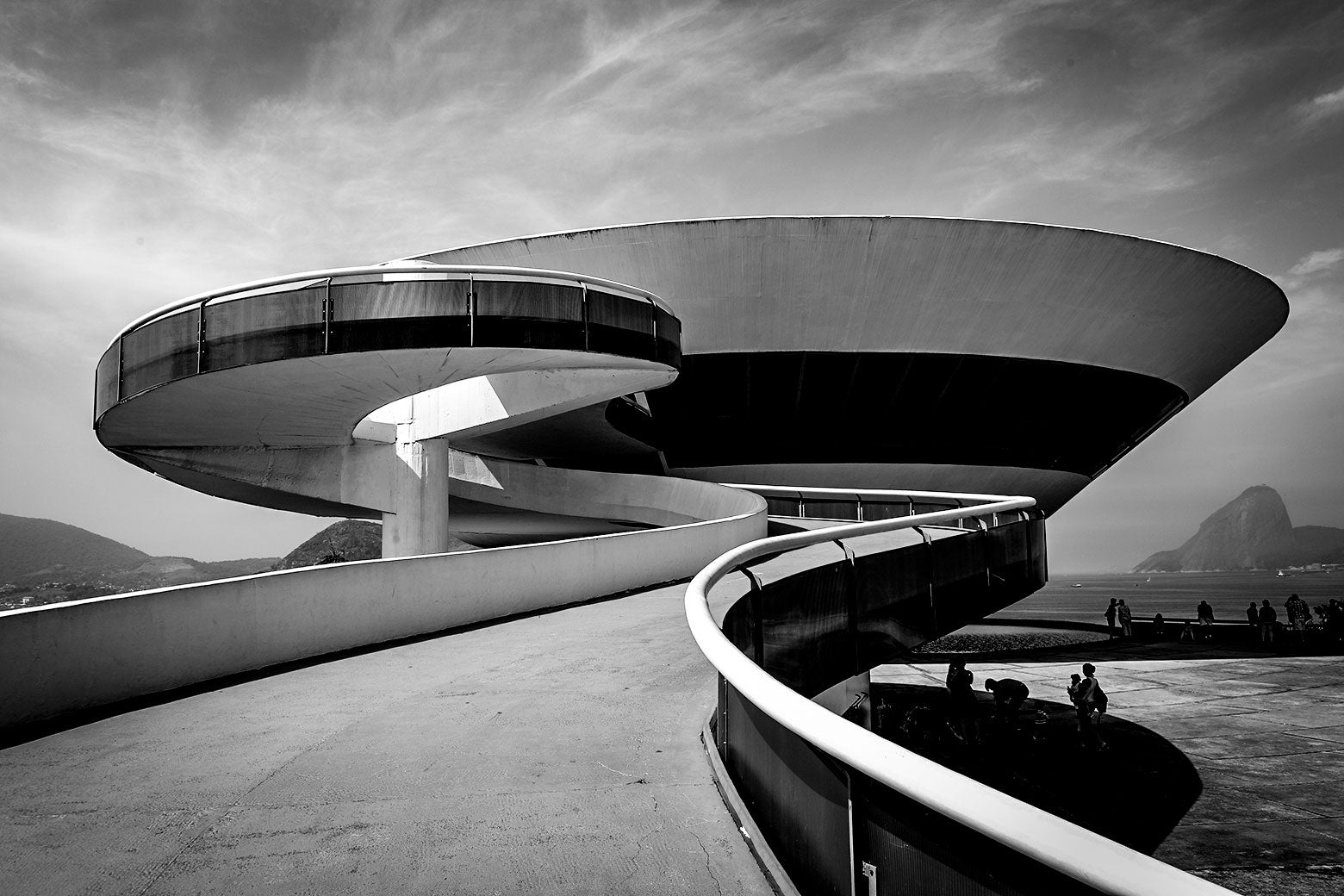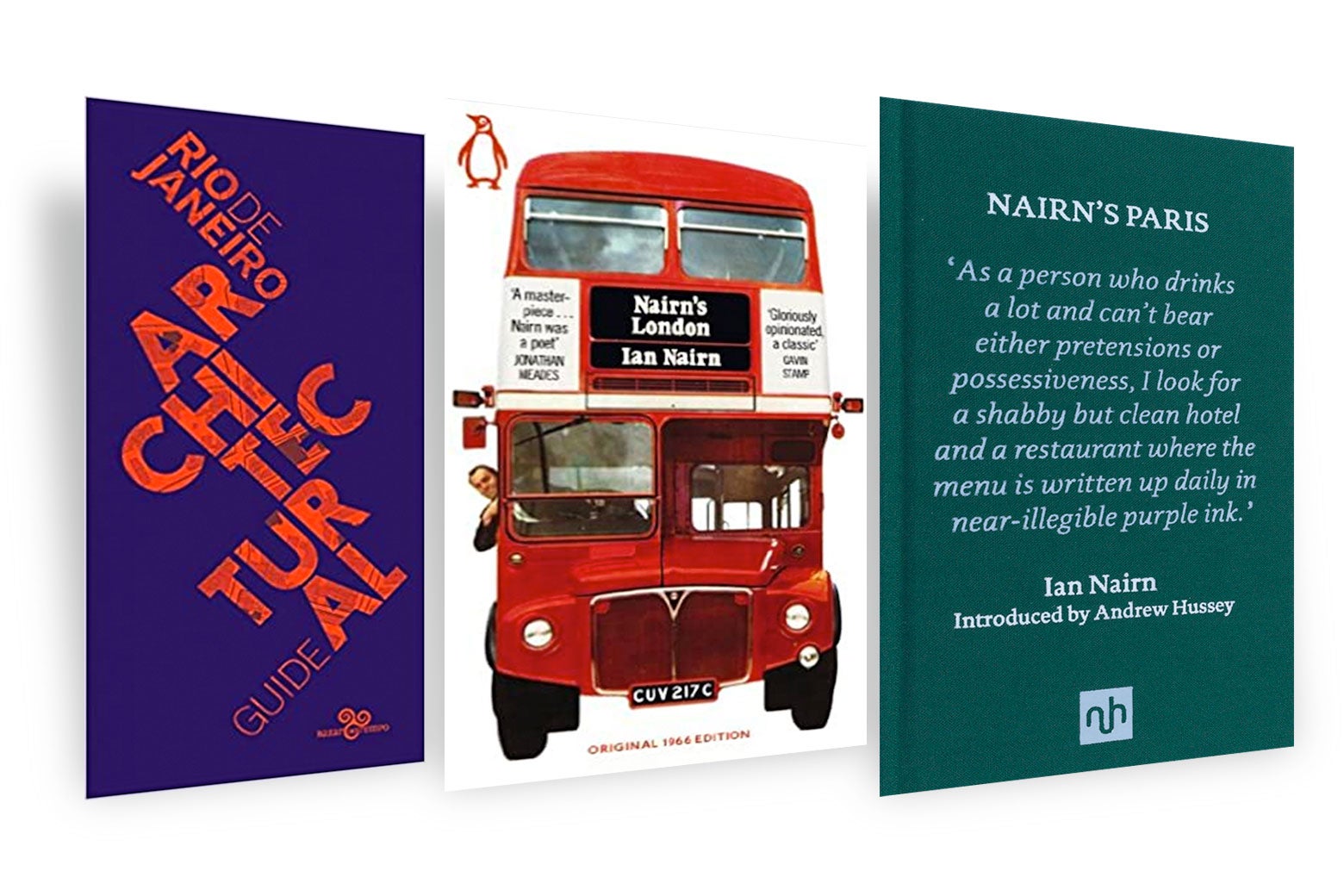
The rise of the smartphone has made it easy to pretend you are not a vacationer. A befuddled backpacker with a clunky digicam on his neck and a guidebook on the desk, holding a map upside down? Not something you see so substantially these days, mainly because the features of individuals objects have all been absorbed by our handsets.
If you want to really feel like a regional in a new town, on the other hand, it is time to decide on up a e-book once more. Specially, an architecture tutorial. Really do not allow the title flip you off there is no jargon in these tall, narrow paperbacks. Sure, they’ll tell you who built which framework. But extra generally than not, they reply a additional essential question that I locate myself inquiring every single time I’m in a new location: What is that factor? Why was it built, and when, and for whom? Providing this context is the main purpose of the architecture guidebook, and it unlocks a deep feeling of exactly where you are.
In Rio, for illustration, I purchased the Rio de Janeiro Architectural Tutorial at the Livraria da Travessa. Between its thick purple addresses are notes on much more than 700 buildings, composed by a group of 8, and a lot more than 400 pictures. Like most volumes of its kind, it’s finest made use of not for arranging, but as a companion to be known as on when you arrive encounter to confront with something that would make you look 2 times. Though I did allow the guide lead me to the Ministry of Education and learning and Wellness, Brazil’s to start with experiment in modernism. The guide information the contributions of now-famed designers Lúcio Costa, Oscar Niemeyer, and Le Corbusier, and treats audience to some traces of verse about the developing from the poet Vinicius de Moraes (who later wrote the terms to “The Lady From Ipanema”):
Geometric shapes
On a songs rating
Aesthetics and silence
Of a area created!
More often, however, I flipped the Rio guideline open when some thing caught my eye— for example, a spiral staircase at the Museu de Arte Moderna, so exquisitely put it appeared to have been slash from the floor previously mentioned and decreased into placement. This was the get the job done of Affonso Eduardo Reidy—a famed photograph of him climbing it throughout design appears like a nonetheless from The Fountainhead. Later on, marveling at the sinuous designs on the sidewalks together Copacabana Seaside, the book popped in once more: This four-kilometer-prolonged mosaic was designed by the Brazilian landscape architect Roberto Burle Marx, and has a declare to be the biggest mosaic tile panel in the environment.
Of course, there is nothing new about this—young aristocrats on the Grand Tour had been predicted to see a city’s excellent properties, and visitors’ maps of the 19th century have been usually superimposed with sketches of churches, palaces, and other constructions that were not to be missed. Such rote, checklist tourism has been tedious visitors for as very long as there have been website visitors. Upon achieving Palestine in the 1860s, Mark Twain wrote in his travelogue The Innocents Overseas, “If all the poetry and nonsense that have been discharged on the fountains and the bland landscapes of this location have been gathered in a e-book, it would make a most valuable quantity to burn.” In Paris, Twain dutifully saw the Previous Masters at the Louvre, but he had more feelings (and a lot more fun) seeing the can-can, and a great deal extra issue with women’s mustaches and how difficult it was to find soap than with Haussmanian architecture.
Items ended up no different in the United States, in which authorities buildings, grand inns, parks, and prosperous people’s homes have been normally on the record of “sights.” As the San Francisco Chamber of Commerce described its didactic aims in 1915: “We shall inform you what to seek and how to uncover it, and perhaps what it could mean when you have uncovered it.” Present day-working day guides will drag you from setting up to constructing as significantly as they’ll notify you where to take in and rest.
A excellent architecture manual, however, isn’t a preachy who’s-who or a classy shortlist in the fashion of a Wallpaper information. It is an omnibus. It opens with a brief introduction that describes how the town grew, outlines its professional priorities and aesthetic proclivities, and chronicles intervals of boom and bust. From there follows a life span of local understanding. In Manual to the Architecture of London, by Edward Jones and Christopher Woodward, which I picked up last yr at the London Review Bookshop, the Nationwide Gallery receives the exact same column inches as Lubetkin and Tecton’s Penguin Pool at the London Zoo. Many of this book’s 1,000-plus entries are simply just titled “House” or “Offices” there are notes on viaducts and avenues and pink telephone containers and unnamed condominium properties, all the unsung vernacular that provides a town its special rhythm. There is no greater way to invest an afternoon in London than riding on the best amount of a double-decker bus with this ebook in your lap.
The sort may perhaps have attained its apex in the arms of Ian Nairn, whose passionate, eccentric guides to London and Paris have grow to be cult objects since their publication a 50 percent-century back. In this article is how Nairn described the Put de la Trinité in Paris: “one of the very best in Paris, a compendium of all the items that make the town unforgettable… a fantastic offer of visitors but not also considerably, massive cafés, a public backyard garden straight away underneath the church, and absolutely everyone working with their city—the park benches household enthusiasts, tramps, knitting mothers, and grandmothers who are further than purling even the simplest jumper. It is as close to pure city liberty as any where in the entire world.” Throw away your Lonely World.

Amazon.
Additional popular is Nairn’s London, which he described as a sequence of limited essays on the 450 “best issues in London,” together with quite a handful of poor things. He surveyed landmarks but also pubs, described partitions “like aged gorgonzola” and noted that the elephant sculpture on the Albert Memorial had “a backside like a businessman scrambling underneath a restaurant table for his cheque reserve.” Between all those to fall less than his spell was the movie critic Roger Ebert, who invested a lot of visits guided by Nairn’s London and afterwards wrote, “He appeared to be standing beside me, chatting about the building we were being each on the lookout at, and yet when I looked at his entry with a writer’s eye I was astonished to discover how short it could possibly be, and how it did not seem to contain an avoidable term.” Ebert so cherished looking at London with Nairn in his pocket that he certain Penguin to reissue the ebook, and inevitably wrote its introduction.
In Chicago, my girlfriend and I froze our arms and strained our necks tramping up and down the canyon of skyscrapers on LaSalle Street with Judith McBrien’s Pocket Guidebook to Chicago Architecture, picked up nearby at the Dial Bookstore. The ebook seemed to recognize almost every single construction in sight as a a single-time planet-record holder in some engineering feat or a different. Marina Metropolis, for instance, was after the tallest concrete and residential structure in the environment. It’s all pretty Chicago.
The Windy City usually takes pride in its standing as an architectural showcase, but just as interesting as the city’s style heritage is its business and industrial trajectory. Chicago’s
”Goth Target,” for case in point, was at first developed by Louis Sullivan as the nine-story division keep Carson Pirie Scott & Co., providing every thing from lamps to lingerie. The close by Great Arts Building, which may perhaps be the country’s most eclectic assemblage of workshops and studios and retailers less than one particular roof, was the moment a Studebaker manufacturing facility and showroom. Those changes are agent ones that notify you a thing about the record of the American city—and very little claims I belong here like contacting some thing by what it made use of to be. (Best not to contact the world’s ex-tallest making the Willis Tower.)
Lastly there are the workplaces, and it is here that an architectural guidebook most clearly veers absent from—and outperforms—a common guidebook. On the one particular hand, getaway is about obtaining away from the business office, but on the other, metropolitan areas have until not long ago derived equally their civic identification and their architectural fabric from the corporations that get in touch with them household and devote their income to make a mark on the skyline. The granddaddy of all the architecture guides is Robert A.M. Stern’s New York 1960, a 9-pound, 1,376-webpage doorstop which, with its encyclopedic authority on hundreds of topics, doubles as the disjointed record of the postwar metropolis. It also can make clear that New York business office structures had been totemic expressions of the day’s leading designers—and, by their names alone, provided a survey of the mid-century New York Metropolis financial system.
The part of the urban office environment constructing may well be switching. For just one point, today’s tech giants are leaving tiny designed legacy, preferring to renovate and occupy older spaces, as Google did with New York’s Port Authority constructing or Twitter with San Francisco’s previous furniture mart, or camp out in the suburbs, like Apple. As the urbanist Stephen Smith set it a couple of yrs back, “Perhaps distinctive amongst New York’s large industries, the tech and innovative tenants that have come to be the darlings of the present marketplace cycle are leaving very minor powering for foreseeable future generations to admire.” For yet another, several large firms are shuffling their office portfolios as they consider to determine out what the long run of get the job done seems to be like.
Several folks, of course, are beautifully satisfied to go all-around having and browsing and looking at a clearly show and browsing the museum and could not care less which megacorporation designed that large boxy white making, or that absolutely everyone hates that it has no corner offices, or that the lavish marble facade virtually came crumbling down and experienced to be wholly changed at huge expenditure. But that is specifically what I want from a vacation. I want to know about the boondoggles and the scandalous demolitions and the gems the engineering follies and the excellent streets the gargoyles and the starchitects and the bars with partitions like old gorgonzola.
Oh, and a excellent meal—but for that I’ve obtained my cellphone.



/cloudfront-us-east-1.images.arcpublishing.com/pmn/XBYSMNVOLVHY5LESNOHCCXTKZA.jpg)


